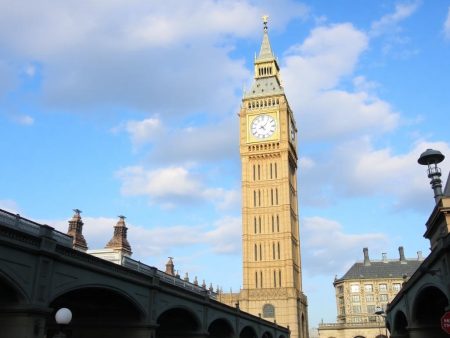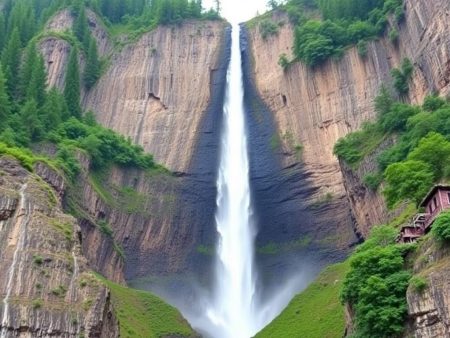Wenn es um US-Präsidenten geht, stehen ihre Führungsqualitäten oft im Mittelpunkt, aber haben Sie sich schon einmal über ihre körperliche Statur gewundert? Neben den vielen faszinierenden Fakten über die Staatsoberhäupter der Nation war die Körpergröße schon immer ein Punkt der Neugier. Manche Präsidenten überragten ihre Kollegen buchstäblich um Kopf und Schultern.
Ein Präsident, insbesondere, hält den Titel des ta
Wer war der größte Präsident? Entdecken Sie die Größe der US-Führer im Laufe der Geschichte
Wenn es um US-Präsidenten geht, stehen ihre Führungsqualitäten oft im Mittelpunkt, aber haben Sie sich schon einmal über ihre körperliche Statur gewundert? Neben den vielen faszinierenden Fakten über die Staatsoberhäupter der Nation war die Körpergröße schon immer ein Punkt der Neugier. Manche Präsidenten überragten ihre Kollegen buchstäblich um Kopf und Schultern.
Konvertieren Sie die Größe der größten Menschen, Gebäude, Berge und Denkmäler in m, Fuß und Zoll, um zu vergleichen
0' 0" entspricht 0,0 cm oder 0,00 m.
Ein Präsident im Besonderen gilt als der größte in der amerikanischen Geschichte. Seine beeindruckende Größe ließ ihn nicht nur aus der Menge hervorstechen, sondern verlieh ihm auch eine imposante Präsenz. Lassen Sie uns in die Geschichte dieser überragenden Persönlichkeit eintauchen und untersuchen, wie seine Statur seine Amtszeit beeinflusst haben könnte.
Überblick über Presidential Heights
Die Körpergröße der Präsidenten hat im Laufe der US-Geschichte erheblich variiert. Der größte Präsident, Abraham Lincoln, war 1,93 m groß, während der kleinste, James Madison, 1,63 m groß war. Dieser Unterschied von 30 cm unterstreicht die unterschiedliche Körpergröße der amerikanischen Staatsoberhäupter.
Eine Körpergröße von 1,78 m war der Durchschnitt aller Präsidenten. Präsidenten wie George Washington und Thomas Jefferson lagen mit einer Größe von etwa 1,80 m ziemlich genau an diesem Durchschnitt. Historische Daten deuten darauf hin, dass größere Kandidaten oft beliebter sind und mit der Wahrnehmung von Autorität und Führungsstärke verbunden sind.
Bemerkenswerte Beispiele für überdurchschnittliche Körpergrößen sind Lyndon B. Johnson mit 1,90 m und Franklin D. Roosevelt mit 1,98 m. Umgekehrt brachen kleinere Präsidenten wie John Adams mit 1,70 m den aufkommenden Größentrend schon früh. Diese Unterschiede zeigen keinen strikten Zusammenhang zwischen Körpergröße und Erfolg als Präsident, sondern unterstreichen die Faszination der Öffentlichkeit für Statur.
Wer war der größte Präsident?
Abraham Lincoln, der 16. Präsident der Vereinigten Staaten, ist der größte Präsident. Mit einer Größe von 1,93 m ist er ein herausragender Mann in der US-Geschichte.
Einzelheiten über Abraham Lincoln
Lincolns überragende Größe war ein oft erwähntes Merkmal seiner körperlichen Präsenz. Er wurde 1809 geboren und wuchs in einer Grenzgegend auf, wo seine Größe sowohl als praktisch als auch als imposant galt. Seine große Statur und sein schlanker Körperbau machten ihn leicht erkennbar und halfen ihm, bei Reden und Versammlungen die Aufmerksamkeit der Öffentlichkeit auf sich zu ziehen. Historische Fotos und Beschreibungen zeigen immer wieder, wie seine Statur seine Rolle als Anführer während des Bürgerkriegs ergänzte.
Neben seiner Größe betonte auch die Wahl eines hohen Zylinderhuts seine körperliche Präsenz. Die Kombination aus Größe und Auftreten trug zur Wahrnehmung von Autorität und Stärke bei, Eigenschaften, die seine Führungsrolle in kritischen Momenten der US-Geschichte stärkten.
Einzelheiten über Lyndon B. Johnson
Lyndon B. Johnson, der 36. Präsident, war mit 1,90 m der zweitgrößte Präsident. Seine Größe, die nur einen Zentimeter kleiner war als die von Lincoln, machte ihn sowohl körperlich als auch politisch zu einer dominanten Figur. Johnsons große, breitschultrige Gestalt untermauerte seinen Ruf als durchsetzungsfähiger und überzeugender Führer.
Er nutzte seine Körpergröße bekanntlich für das, was Journalisten und Kollegen als „Johnson-Behandlung“ bezeichneten. Bei dieser Technik lehnte er sich während Gesprächen in die Privatsphäre, um seine Argumente zu unterstreichen, und nutzte seine körperliche Statur, um Einfluss zu gewinnen. Seine imposante Präsenz spielte bei seinen Interaktionen oft eine Schlüsselrolle, sei es bei der Sicherung der Unterstützung für den Civil Rights Act von 1964 oder bei der Führung kontroverser Gesetzesdebatten.
Welche Rolle die Körpergröße in der Geschichte spielte
Körpergröße wird oft mit der Wahrnehmung von Autorität und Führungsstärke in Verbindung gebracht. Größere Präsidenten zogen häufig die Aufmerksamkeit der Öffentlichkeit auf sich und wiesen eine imposante Präsenz auf.
Öffentliche Wahrnehmung großer Präsidenten
Große Präsidenten wirkten oft autoritärer und kompetenter. Bei zahlreichen Wahlen bevorzugten die Wähler größere Kandidaten, da sie Größe mit Stärke und Kompetenz assoziierten. So ließ Abraham Lincolns 1,93 m große Statur ihn nicht nur körperlich hervorstechen, sondern stärkte auch sein Image als entschlossener Führer während des Bürgerkriegs. Ebenso verlieh Lyndon B. Johnsons 1,90 m große Statur ihm Selbstvertrauen und Entschlossenheit, als er entscheidende Momente in der US-Geschichte meisterte. Studien legen nahe, dass größere Personen in Führungspositionen als überzeugender und einflussreicher wahrgenommen werden, was diese öffentliche Voreingenommenheit noch verstärkt.
Größe und Führungsqualitäten
Die Körpergröße hat gelegentlich den Führungsstil und die Effektivität gestärkt. Größere Führungskräfte wie Johnson nutzten ihre Körperlichkeit strategisch, um Macht zu demonstrieren und Allianzen zu schmieden. Durch Gesten, Körpersprache und Präsenz verschafften sie sich in beruflichen und politischen Kreisen Respekt. Lincolns schlaksige Gestalt, kombiniert mit seinen bedachten Bewegungen und seiner Sprache, trugen dazu bei, seine charismatische Anziehungskraft zu festigen und Zuhörer in turbulenten Zeiten zu beruhigen. Während die Körpergröße zur Wahrnehmung von Stärke beitragen kann, definieren letztlich andere Faktoren wie Intellekt, Charisma und Politik eine erfolgreiche Führung.
Vergleiche zwischen Präsidenten
Die Größenunterschiede zwischen US-Präsidenten zeigen interessante Kontraste auf. Die Untersuchung dieser Unterschiede gibt Aufschluss darüber, wie die Größe die Führung und die öffentliche Wahrnehmung beeinflusst hat.
Durchschnittliche Höhen im Laufe der Zeit
Die durchschnittliche Größe der US-Präsidenten hat sich im Laufe der Jahrhunderte verändert. Frühe Präsidenten wie George Washington übertrafen mit 1,88 m die durchschnittliche Größe der Männer dieser Zeit, die bei etwa 1,73 m lag. Im 20. und 21. Jahrhundert stieg die durchschnittliche Größe eines Präsidenten auf 1,78 m, was allgemeinere Bevölkerungstrends widerspiegelt.
Moderne Präsidenten wie Barack Obama und Bill Clinton, die beide 1,88 m groß sind, repräsentieren dieses Muster der zunehmenden Körpergröße. Diese Trends zeigen, dass die Vorliebe der Öffentlichkeit für größere Kandidaten im Laufe der Zeit angehalten hat.
Kleinster vs. größter Präsident
Die Größenspanne der Präsidenten beträgt über 30 cm und weist erhebliche körperliche Unterschiede auf. Abraham Lincoln ist mit 1,93 m der größte Präsident, während James Madison mit 1,63 m der kleinste ist. Trotz dieses Unterschieds prägten beide Staatsoberhäupter entscheidende Momente in der amerikanischen Geschichte.
Madisons geringe Körpergröße behinderte weder seine Wirksamkeit als Gründervater noch seine Rolle bei der Ausarbeitung der Verfassung. Umgekehrt verstärkte Lincolns überragende Präsenz seine Führungsrolle während des Bürgerkriegs. Diese Beispiele zeigen, dass die Körpergröße zwar die Wahrnehmung beeinflussen kann, aber nicht den Erfolg eines Präsidenten bestimmt.
Abschluss
Die Faszination für die Größe eines Präsidenten bietet eine einzigartige Perspektive, durch die man Führung und öffentliche Wahrnehmung untersuchen kann. Während überragende Persönlichkeiten wie Abraham Lincoln und Lyndon B. Johnson durch ihre physische Präsenz Aufmerksamkeit erregten, zeigt die Geschichte, dass Statur allein nicht das Vermächtnis eines Präsidenten definiert.
Führung wird von Qualitäten geprägt, die weit über die Körpergröße hinausgehen, darunter Intelligenz, Charisma und die Fähigkeit, zu inspirieren. Ob groß oder klein, jeder Präsident hat Spuren hinterlassen und bewiesen, dass wahrer Erfolg in seinen Taten und Visionen liegt und nicht in seiner körperlichen Gestalt.
Häufig gestellte Fragen
Wer war der größte US-Präsident der Geschichte?
Abraham Lincoln war mit 1,93 m der größte US-Präsident. Seine Größe verlieh ihm bei Reden eine imposante Präsenz und Anziehungskraft auf die Öffentlichkeit.
Wer war der kleinste US-Präsident?
James Madison war mit einer Körpergröße von nur 1,62 m der kleinste US-Präsident. Trotz seiner Größe hatte er großen Einfluss auf die amerikanische Geschichte.
Hat die Körpergröße Einfluss auf die Führungsqualitäten eines Präsidenten?
Die Körpergröße beeinflusst zwar die öffentliche Wahrnehmung, bestimmt aber nicht die Führungsqualitäten. Für den Erfolg eines Präsidenten sind Faktoren wie Intelligenz, Charisma und politische Strategien entscheidender.
Wie groß sind US-Präsidenten im Durchschnitt?
Die durchschnittliche Größe eines US-Präsidenten liegt bei etwa 1,78 m, wobei die Größe im Laufe der Geschichte erheblich variierte.
Welchen Einfluss hat die Körpergröße auf die öffentliche Wahrnehmung von Führung?
Größere Führungskräfte werden oft als autoritärer und selbstbewusster wahrgenommen, was die öffentliche Meinung beeinflussen kann. Letztendlich definieren jedoch andere Qualitäten eine effektive Führung.





